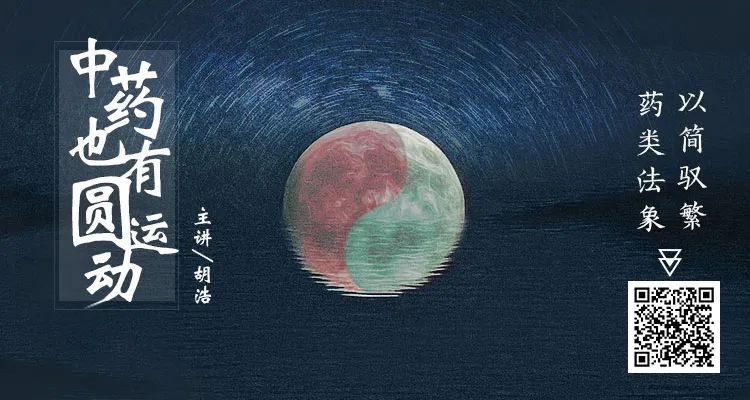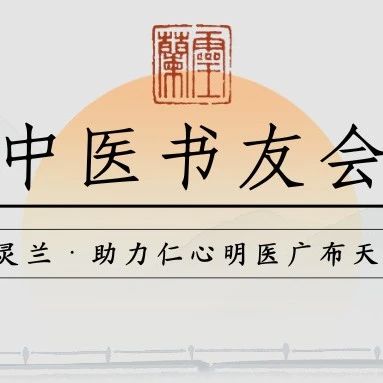
Chinese Medicine Book Club Issue 2640
One article per day, accompanying the growth of TCM practitioners
Due to changes in the public account’s push mechanism, articles will no longer be displayed in chronological order, so you may not see the articles from the Chinese Medicine Book Club in your timeline.If you wish to see the articles from the Book Club in a timely manner, you can do the following:

IIntroduction:This article is rich in content, referencing classics, and is crucial for learning about Chinese herbs! (Editor/Cai Zhongxun)

Exploring the ‘Famous Sites’ of Chinese Medicine
Authors/Yu Hao, Zheng Li
To avoid making our learning journey too monotonous, let us visit and learn about the famous historical sites of Chinese medicine, and see the contributions made by ancient sages for human health in the study and organization of Chinese herbs.
The ‘famous sites’ of Chinese medicine are best represented by the Shennong Bencao Jing, which is the earliest monograph on pharmacology, akin to the founding document of the field of pharmacology. Its value cannot be underestimated, and it is rightly regarded as one of the four great classics of Chinese medicine.
This book records 365 medicinal substances, corresponding to the 365 days of the year. Based on the properties and different applications of these substances, they are classified into three categories: upper, middle, and lower grades, putting into practice the theory of the three grades of medicinal substances proposed in the Suwen: Zhi Zhen Yao Da Lun.
“The upper-grade medicines, 120 types, are the sovereign, responsible for nourishing life in accordance with heaven, non-toxic, and can be taken frequently and for long periods without harm. Those who wish to lighten their body, enhance their energy, and prolong their life should refer to this.”
“The middle-grade medicines, 120 types, are the ministers, responsible for nourishing the nature in accordance with humanity, can be toxic or non-toxic, depending on suitability. Those who wish to suppress diseases and replenish deficiencies should refer to this.”
“The lower-grade medicines, 125 types, are the assistants, responsible for treating diseases in accordance with the earth, often toxic, and should not be taken for long periods. Those who wish to eliminate cold and heat evils, break accumulations, and cure diseases should refer to this.”
Each medicine is recorded with its properties, functions, and indications, along with a preface that briefly describes the basic theories of medicinal substances, such as toxicity, non-toxicity, four qi (cold, hot, warm, cool), five flavors (sour, salty, sweet, bitter, pungent), compatibility rules, methods of administration, and forms such as pills, powders, pastes, and wines. It can be said to be a summary of medicinal knowledge in China before the Han dynasty, laying the foundation for the development of pharmacology in later generations.
The development of Chinese medicine in later generations has been like a snowball, becoming increasingly rich, but the core of this snowball is the Shennong Bencao Jing, whose therapeutic experiences for diseases continue to play a guiding role even today.
For example: “Treat cold with hot medicines, treat heat with cold medicines, if food does not digest, use emetics or purgatives. For ghostly poison, use toxic medicines. For carbuncles and sores, use sore medicines. For wind and dampness, use wind and dampness medicines. Each should be treated according to its suitability.” This continues to guide clinical medication.
“In treating diseases, first observe their source, consider their pathogenesis, if the five organs are not deficient, the six bowels are not exhausted, the blood vessels are not chaotic, and the spirit is not scattered, medication will surely be effective. If the disease has already formed, one may achieve half recovery. If the disease has progressed, life will be difficult to preserve.”
“For diseases above the chest, eat first and then take medicine. For diseases below the heart and abdomen, take medicine first and then eat. For diseases in the limbs and blood vessels, it is advisable to take medicine on an empty stomach in the morning. For diseases in the bone marrow, it is advisable to be full and take medicine at night.” This clearly indicates the timing and methods of taking medicine.
When first encountering this book, many concepts may be difficult to understand, but after years of clinical practice, revisiting it reveals that every sentence in the Bencao Jing has profound significance. Sometimes understanding a single sentence can resolve a difficult case, which is no exaggeration.
For example, the Shennong Bencao Jing records Huang Qi: sweet in flavor, slightly warm, non-toxic, indicated for carbuncles, chronic ulcers, pus drainage and pain relief, major wind diseases, five types of hemorrhoids, mouse fistula, tonifying deficiency, and all diseases in children, growing in mountain valleys.
In just 33 characters, it clearly describes the properties, flavor, toxicity, indications, and origin of Huang Qi. If we conduct an in-depth study of these 33 characters, we will gain new insights into the treatment of “carbuncles that do not heal for a long time,” “hemorrhoids,” “lymph node tuberculosis that does not heal,” and “children with weak constitutions.” It is often seen in magazines that Huang Qi is used to treat various ulcers, which is indeed the application of the content of the Bencao Jing in clinical practice.
As you see, once you remember it and apply it clinically, you will understand how it works!
Skin ulcers can be treated with Huang Qi, and internal organ ulcers can also be treated; as long as it is “chronic ulcers,” it will naturally be effective! Is it not true that some practitioners use Huang Qi to treat gastric ulcers? This is also an application of the Bencao Jing.
“Major wind diseases” can be treated, and naturally, general wind conditions can also be treated. Many patients experience skin allergies in spring, itching, and rashes all over the body! Taking antihistamines is temporarily effective, but the symptoms recur after stopping the medication! Using Huang Qi heavily, combined with wind-dispelling medicines, will yield miraculous results. This is because the wind evil is predominant in spring, and if the body’s defensive qi is insufficient, it cannot protect the surface, allowing wind evil to enter through the skin, causing itching.
Huang Qi greatly tonifies the defensive qi, and once the defensive qi is replenished, the resistance becomes strong, and the wind evil cannot enter the body! Coupled with wind-dispelling medicines, the internal wind evil is expelled, and the disease is cured! At this point, it becomes clear why Huang Qi can treat “major wind diseases.”
Now let’s look at another herb—She Chuang Zi
“She Chuang Zi, bitter and neutral in flavor. Indicated for swelling and pain in women’s genitals, male incontinence, damp itching, dispelling bi syndrome, benefiting joints, epilepsy, and sores. Long-term use lightens the body. Also known as snake grain or snake rice, it grows in river valleys.” This is the original text from the Bencao Jing.
“Indicated for swelling and pain in women’s genitals,” this line is frequently used. Generally, external medicines for gynecology cannot do without She Chuang Zi, as it dries dampness and detoxifies, effectively treating gynecological inflammation caused by damp evil, especially when combined with Ku Shen, effective for both cold and heat.
“Male incontinence, damp itching,” this line is less frequently applied in clinical practice. In clinical settings, we often encounter patients with chronic moisture in the scrotum, where the patient experiences constant dripping like water. Many doctors treat it as eczema, which is often ineffective; some diagnose it as chronic prostatitis and treat it with antibiotics for a month without good results. In fact, this condition is “incontinence,” where the moisture drips continuously, leading to “damp itching.” To treat this condition, simply using She Chuang Zi decocted in water for external washing can be effective. If combined with Ku Fan, the effect is even better.
“Dispelling bi syndrome, benefiting joints” indicates that She Chuang Zi is also beneficial for joint pain caused by cold and dampness.
“Epilepsy, sores” may be rarely used. The Neijing states: “Excessive Yang must be manic, excessive Yin must be epileptic.” When the body’s Yin evil is excessive, it manifests externally and accumulates under the skin, easily leading to sores; if it rises, it obscures the clear orifices, resulting in epilepsy. Internal use of She Chuang Zi can warm and tonify kidney Yang, strengthen kidney fire, and when kidney fire is vigorous, Yin and cold substances melt away, naturally effective for epilepsy and sores.
By analyzing these two herbs, we understand the treatment of several difficult diseases. If we repeatedly study the Shennong Bencao Jing, our understanding of medicinal substances will deepen, and we will gain many inspirations for treating diseases.
Many netizens ask how to approach difficult and miscellaneous diseases? How to use medicines? My experience is to repeatedly study the Shennong Bencao Jing, trying to understand every sentence, as this not only inspires the use of medicines for many difficult and miscellaneous diseases but also greatly aids in understanding classical formulas.
Having visited the most classic historical sites of Chinese medicine, we will move on to the next stop—formulas. If you want to take a photo and leave a memory, remember to flip through the Shennong Bencao Jing, look at the text inside, feel the profound wisdom of the ancients, and comprehend the highest realm of pharmacology; that is the best memory!
Travel Tip: The first stop of the learning journey has ended; you can take stock of your recent gains. To cultivate interest, you can study in conjunction with Yixue Zhongzhong Canxi Lu and Taishi Yaopu; to get started, you must study with Yaoxing Fu or textbooks on Chinese herbal medicine; to improve, you must read the Bencao Jing.
Recommended Reading
Single herb usage, the death of famous doctors—25 new clinical uses of single Chinese herbs
Common Chinese herbs categorized by main effects
|
I Copyright Statement
I Submission Email [email protected] |
The theory of medicinal classification, with detailed explanations of 60 Chinese herbs. According to the classification method of “wind rises, heat floats, dryness descends, cold sinks, dampness transforms,” it guides you to learn and understand the properties and effects of Chinese herbs from the source, forming a complete concept of the circular movement of Chinese medicine.
Clinical practitioner—Teacher Hu Hao teaches you how to use Chinese herbs effectively, employing both internal and external methods to flexibly address common and frequently occurring diseases in various clinical departments, diminishing sectarian disputes, and effectively improving clinical efficacy. Scan to join the learning immediately!


Click Read the original text to watch more free course content

